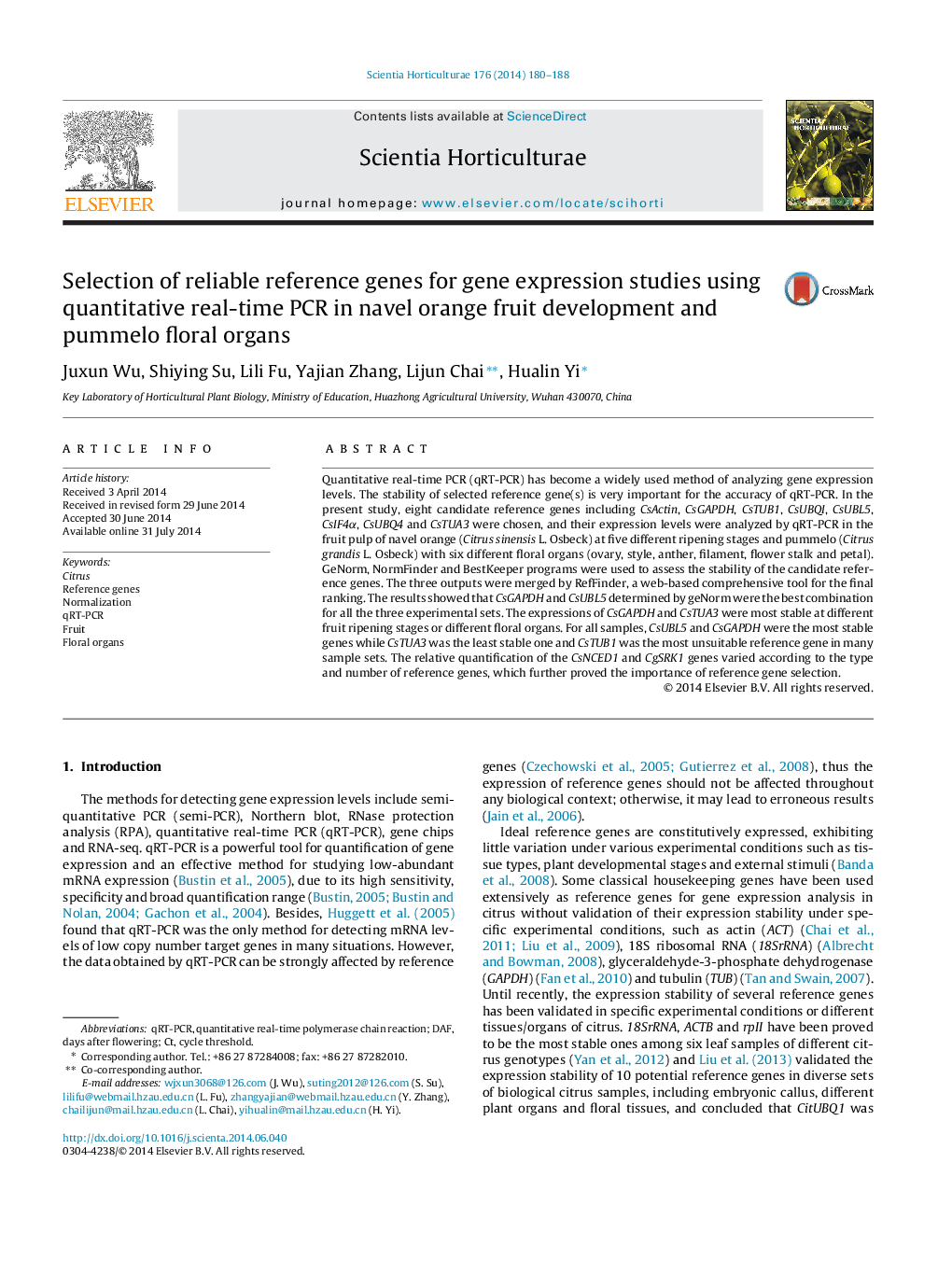| Article ID | Journal | Published Year | Pages | File Type |
|---|---|---|---|---|
| 4566752 | Scientia Horticulturae | 2014 | 9 Pages |
•We firstly validated appropriate reference genes during fruit ripening stages of Citrus by qRT-PCR.•CsGAPDH and CsUBL5 were the best combination for all the three experimental sets.•The selection of appropriate reference genes is crucial for accurate quantification of target genes and the best suitable reference genes differed depending on the tissues or experimental conditions.
Quantitative real-time PCR (qRT-PCR) has become a widely used method of analyzing gene expression levels. The stability of selected reference gene(s) is very important for the accuracy of qRT-PCR. In the present study, eight candidate reference genes including CsActin, CsGAPDH, CsTUB1, CsUBQI, CsUBL5, CsIF4α, CsUBQ4 and CsTUA3 were chosen, and their expression levels were analyzed by qRT-PCR in the fruit pulp of navel orange (Citrus sinensis L. Osbeck) at five different ripening stages and pummelo (Citrus grandis L. Osbeck) with six different floral organs (ovary, style, anther, filament, flower stalk and petal). GeNorm, NormFinder and BestKeeper programs were used to assess the stability of the candidate reference genes. The three outputs were merged by RefFinder, a web-based comprehensive tool for the final ranking. The results showed that CsGAPDH and CsUBL5 determined by geNorm were the best combination for all the three experimental sets. The expressions of CsGAPDH and CsTUA3 were most stable at different fruit ripening stages or different floral organs. For all samples, CsUBL5 and CsGAPDH were the most stable genes while CsTUA3 was the least stable one and CsTUB1 was the most unsuitable reference gene in many sample sets. The relative quantification of the CsNCED1 and CgSRK1 genes varied according to the type and number of reference genes, which further proved the importance of reference gene selection.
